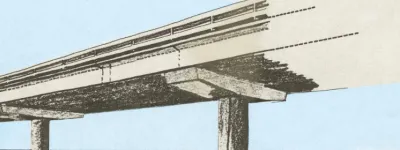Outline itinerary
Clapham-Wandsworth Link (Clapham Junction)
A24 (Clapham High Street)
M23 (Tooting Bec Common)
Parkway E (Tulse Hill)
The route
This route description starts at the western end of the route and travels east.
This short section of motorway was planned to head south from a point just west of Clapham Junction, peeling off from the Clapham-Wandsworth Link which was to follow the railway between Putney and Clapham Junction. The Balham Loop would follow the Brighton Main Line railway through Balham itself, curving east to Tooting Bec Common where a three-way interchange would form the northern terminus of the M23.
From here it would continue east, terminating at Tulse Hill on Parkway E, another radial motorway planned to run out through West Norwood to Addington. Just one junction would be provided to connect the motorway to the surface street network, located immediately west of the M23 at the A24 Balham High Street.
Free-flowing interchanges were planned with the M23 and at both ends of the route, all in the form of triangular junctions with semi-directional sliproads. The M23 interchange would have occupied almost all of the northern end of Tooting Bec Common, something of a triumph of highway engineering over all other concerns for landscape or amenity.
At the Clapham Junction end, eight parallel carriageways (four in each direction, with two running underneath the others) connected the two adjacent interchanges to provide the necessary connections between the Balham Loop, the Clapham-Wandsworth Link and Ringway 1.
The M23 must end
The Balham Loop was first planned - in secret, along with all the London County Council's other motorway proposals - in the very early 1960s, an era in which Ringway 1 (then still called the London Motorway Box) would have been the only orbital motorway and the South Cross Route incorporated what became the Clapham-Wandsworth Link and part of Ringway 2. At that time it was formulated as a way of distributing traffic and allowing more direct journeys where the M23 and Parkway E approached London from the south, and was known as the Southlink. Detailed designs were drawn up by the consulting engineers Husband & Co. as part of the design work for the South Cross Route.
In this guise it was very much designed to be a way of elegantly terminating the M23, something for which any number of ideas were formulated from the 1920s to the 1970s. Its forerunner, in an era before motorway ring roads were in planning, had been a dual carriageway distributor road called the Tulse Hill Link. That was proposed as a connection from the A214 at Tooting Bec Common to the A205 South Circular Road just east of Tulse Hill, which would have dispersed M23 traffic across a range of existing roads in South London.
The new Southlink drawn up by the LCC replaced the Tulse Hill Link in its entirety, and in the earliest drawings for their urban motorway network - sketched long before detailed plans were made - it included an eastward extension from Parkway E to end on the A205 South Circular Road, just as its predecessor had. By the time Husband & Co. were dreaming about filling South London parks with sliproads and flyovers, that connection had been removed.
Here today, gone tomorrow
Proposals for the Balham Loop were under wraps until 1966, when they were finally published as part of GLC's grand unveiling of the plans for Ringway 1 - though they were almost certainly legally safeguarded years earlier than that, and householders along the route might well have known that there was trouble brewing. The GLC seemed to favour the name "Balham Loop" and it appeared in some literature and news reporting of the time. In general, however, the London Motorway Box made the headlines, casting a bigger and far more worrying shadow over a much larger area.
The Balham Loop's time in the spotlight was decidedly short-lived. It, and the northernmost section of M23 that was to connect to it, both vanished within a year. Various South London newspapers suggest that it had already been deleted in early 1967.
...the G.L.C. ended anxiety for many families living in Wandsworth by dropping the "Balham Loop" section from its scheme. This part of the proposed motorway box for inner London, which had previously been "safeguarded", is no longer required because the Transport Ministry has decided that the M.23 from Brighton can stop its main journey into the centre at an earlier interchange at Streatham Vale.
Picture credits
- Route map contains OS data © Crown copyright and database rights (2017) used under the terms of the Open Government Licence.
- Perspective drawing of Tulse Hill Interchange and plan of the M23 interchange are extracted from the South Cross Route Consulting Engineers' Interim Report, 1965, in GLC/TD/DP/LDS/02/097.
- Sketch plan of Balham Loop extending to A205 is extracted from MT 106/195.
- GLC map with Balham Loop crossed out is extracted from MT 106/291.
Sources
- Route: T 319/1842 has the standard GLC map of Ringway 1, including the Balham Loop.
- Layout of interchanges; name "Southlink": GLC/TD/DP/LDS/02/097.
- LCC plan showing extension east to A205: MT 106/195.
- Withdrawal of route in 1967: Report in Wandsworth Boro' News, 21/01/1967; MT 106/291 has a GLC memo announcing deletion of route dated 23/01/1967.
